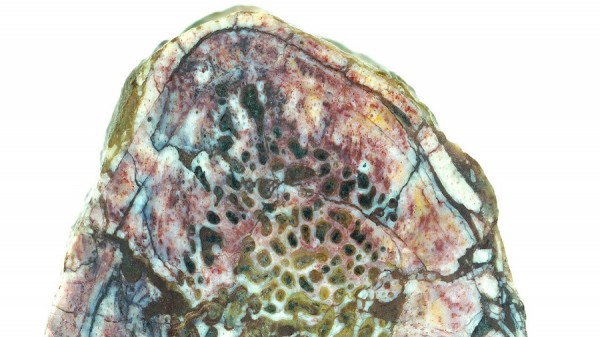By Ana Verayo, | February 03, 2017

Close up of a cross section of the “Lufengosaurus” rib, showing how the bone was organized around vascular canals that contained blood vessels
Scientists have discovered ancient proteins inside a dinosaur bone dating back to 195 million years. This would mean that this new finding becomes the oldest evidence of proteins from prehistoric time, making this older by 100 million years.
Apart from dinosaur proteins, scientists from the University of Toronto, Canada, also have detected mineral traces that are most likely derived from the blood of an early Jurassic era dinosaur specimen.
Like Us on Facebook
Fossilized evidence of soft tissues can provide crucial insights about dinosaur evolution including their anatomy and biology. Since soft tissues are rarely preserved in such pristine conditions, this rare specimen slowly turned into solid form like a rock.
According to paleontologist Robert Reisz of the University of Toronto in Mississauga, Canada, we are hoping to learn more about these animals and by investigating and analyzing more of these soft tissues, we can know about the overall biology of this dinosaur.
More specifically, rather than studying the soft tissue impression of the specimen, the team examined how this specimen was preserved, to provide more crucial insight about the original tissue material, says Reisz.
During the study, researchers examined the fossilized remains of the Lufengosaurus dinosaur using a special instrument called infrared spectroscopy with a synchotron in the Taiwanese National Synchrotron Radiation Research Centre in Taiwan.
Scientists were able to find preserved fragments made of collagen and proteins rich in iron within the blood vessel walls that are flowing the rib bones. More importantly, the team suggests that this rare dinosaur blood and collagen specimen may have been preserved for almost 200 million years.
By using this method of infrared spectroscopy with a synchotron, scientists were able to examine the chemical properties of the Lufengosaurus dinosaur's rib bone without extraction that can lead to risk of contamination.
The Lufengosaurus dinosaur belongs to a group of dinosaurs classified as early sauropodomorph dinosaurs during the early Jurassic period in Yunnan, southwest of China. A site in southwestern China has already revealed multiple skeletal remains of this plant eating dinosaur.
This new study is published in the journal, Nature Communications.
-
Use of Coronavirus Pandemic Drones Raises Privacy Concerns: Drones Spread Fear, Local Officials Say

-
Coronavirus Hampers The Delivery Of Lockheed Martin F-35 Stealth Fighters For 2020

-
Instagram Speeds Up Plans to Add Account Memorialization Feature Due to COVID-19 Deaths

-
NASA: Perseverance Plans to Bring 'Mars Rock' to Earth in 2031

-
600 Dead And 3,000 In The Hospital as Iranians Believed Drinking High-Concentrations of Alcohol Can Cure The Coronavirus

-
600 Dead And 3,000 In The Hospital as Iranians Believed Drinking High-Concentrations of Alcohol Can Cure The Coronavirus

-
COVID-19: Doctors, Nurses Use Virtual Reality to Learn New Skills in Treating Coronavirus Patients







